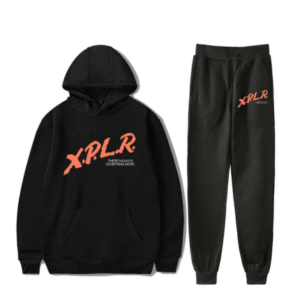Used Cooking Oil (UCO) is no longer just a kitchen byproduct to be discarded; it’s a valuable commodity driving a global shift toward sustainability and renewable energy. UCO, sourced primarily from restaurants, food processing industries, and households, is an essential feedstock for producing biodiesel, sustainable aviation fuel (SAF), and other bio-based products. Its transition from a problematic waste stream that clogs drains and poses public health risks (when illegally reused) to a critical component of the circular economy defines one of the most exciting narratives in the modern resource management landscape. The global push for lower carbon emissions, coupled with government mandates and technological advancements, has positioned the UCO market for significant and continued expansion.
The global used cooking oil market size was valued at USD 6.95 billion in 2024 and is expected to reach USD 10.26 billion by 2032, at a CAGR of 5.00% during the forecast period
See what’s driving the Used Cooking Oil Market forward. Get the full research report:
https://www.databridgemarketresearch.com/reports/global-used-cooking-oil-market
Market Size and Share: A Multi-Billion Dollar Engine
The global UCO market is a multi-billion dollar enterprise, reflecting the high volume of oil consumption worldwide and the escalating demand for sustainable alternatives.
The global used cooking oil market was valued at approximately $6.90 billion in 2024. This substantial valuation is projected to grow significantly, with forecasts suggesting a reach of around $12.85 billion by 2032, exhibiting a robust Compound Annual Growth Rate (CAGR) of over 8.13% during the forecast period.
Dominant Regions and Applications
In terms of Market Share, the landscape is concentrated geographically and by application:
- Regional Dominance: North America and Europe currently hold the largest market shares, driven by strong regulatory frameworks, advanced collection infrastructure, and high adoption of biofuels. North America accounted for over 40% of the market share in 2024. However, the Asia-Pacific region is projected to be the fastest-growing market, spurred by rapid urbanization, expanding foodservice sectors, and increasing government focus on formal UCO collection and biofuel adoption, particularly in countries like China and India.
- Application Share: The segment of biodiesel and Hydrotreated Vegetable Oil (HVO) production dominates the application landscape, capturing an overwhelming majority of the market’s revenue share, often exceeding 50%. This dominance underscores the central role of UCO as a preferred, low-carbon feedstock for the biofuel industry. Other important applications include oleochemicals (for soaps and lubricants) and animal feed additives.
Market Demand and Trends: The Green Energy Catalyst
The demand for UCO is fundamentally tethered to the global commitment to reduce carbon footprints and the surge in the renewable energy sector.
Drivers of Market Demand
- Biodiesel and SAF Production: The most significant driver is the soaring demand for biodiesel and Sustainable Aviation Fuel (SAF). UCO is a highly desirable feedstock because its use results in lower lifecycle greenhouse gas (GHG) emissions compared to virgin vegetable oils. Government mandates, like the U.S. Renewable Fuel Standard (RFS) and the European Union’s Renewable Energy Directive (RED), require blending renewable fuels, creating a reliable, long-term demand for UCO-based fuels.
- Regulatory Push for Waste Management: Stricter environmental regulations worldwide are mandating the proper collection and recycling of UCO, diverting it from illegal reuse (a public health hazard) and improper disposal (which causes environmental damage). Initiatives like India’s Repurpose Used Cooking Oil (RUCO) initiative and Europe’s waste management frameworks are converting this waste stream into a legitimate resource.
- Cost-Effectiveness: UCO is generally less expensive than virgin vegetable oils, making it an economically attractive feedstock for biofuel producers. This price differential helps maintain high demand, even amidst fluctuating energy markets.
Key Market Trends
- Shift to Advanced Biofuels (HVO/SAF): A major trend is the increasing utilization of UCO for producing Hydrogenated Vegetable Oil (HVO), also known as renewable diesel, and Sustainable Aviation Fuel (SAF). These ‘second-generation’ biofuels are chemically identical to petroleum diesel and jet fuel, respectively, making them seamless drop-in replacements, further amplifying demand.
- Technological Advancements in Processing: Innovation in pre-treatment and conversion technologies is making UCO processing more efficient and capable of handling varying oil qualities, which increases the total addressable supply and reduces production costs.
- Expansion of Collection Networks: The market is witnessing increased investment in developing better collection infrastructure, moving beyond commercial foodservice operators (HoReCa) to include more structured collection from households. This improves supply chain traceability and consistency.
- Circular Economy Integration: There’s a growing business trend to integrate UCO collection directly into the supply chains of large food manufacturers and restaurant chains, establishing a verifiable and sustainable circular economy model.
Market Opportunities and Challenges: Navigating the Supply Chain
While the outlook is overwhelmingly positive, the UCO market faces distinct opportunities for growth and notable challenges that require strategic solutions.
Opportunities for Growth
- Untapped Household Supply: The massive volume of UCO generated by households globally remains largely uncollected and improperly disposed of. Developing efficient, localized household collection models represents an immense, untapped supply opportunity.
- Oleochemicals and Other Applications: Beyond fuel, the demand for bio-based oleochemicals (used in soaps, lubricants, and cosmetics) is growing as industries seek to replace petroleum-derived inputs. UCO provides an affordable, sustainable source for these chemical building blocks.
- Global Expansion of Biofuel Mandates: As more nations implement and strengthen biofuel blending mandates and carbon reduction targets, especially for hard-to-decarbonize sectors like aviation, the demand for UCO will continue to rise exponentially.
Key Challenges
- Supply Chain Fraud and Traceability: The increased value of UCO has led to a major challenge: fraud. This includes illegally diverting UCO meant for recycling back into the food chain and importing virgin vegetable oil disguised as UCO to gain biofuel subsidies. Maintaining a transparent, verifiable, and traceable supply chain is crucial to prevent these unethical practices.
- Collection Infrastructure in Emerging Markets: Many developing regions lack the robust, standardized collection and storage infrastructure needed to efficiently aggregate UCO from diffuse sources, hindering their ability to scale up for industrial use.
- Quality and Contamination Control: The quality of collected UCO can be highly variable, often containing water, food particles, and high levels of Free Fatty Acids (FFAs). This contamination increases the cost and complexity of the refining process for high-quality biofuels.
- Price Volatility: UCO prices can fluctuate based on virgin oil prices, energy market dynamics, and competition with other waste fats, creating instability for long-term procurement and investment planning.
In summary, the used cooking oil market is a vibrant sector at the nexus of waste management and renewable energy. Its future is bright, contingent on solving the challenges of collection efficiency and supply chain integrity to fully capitalize on its potential as a sustainable and scalable liquid gold resource.
Contact Us:
Data Bridge Market Research
US: +1 614 591 3140
UK: +44 845 154 9652
APAC : +653 1251 975
Email:- corporatesales@databridgemarketresearch.com



